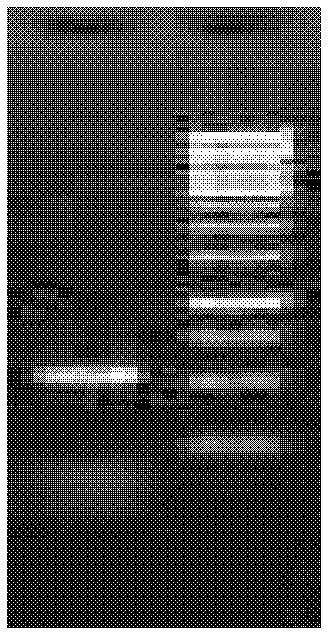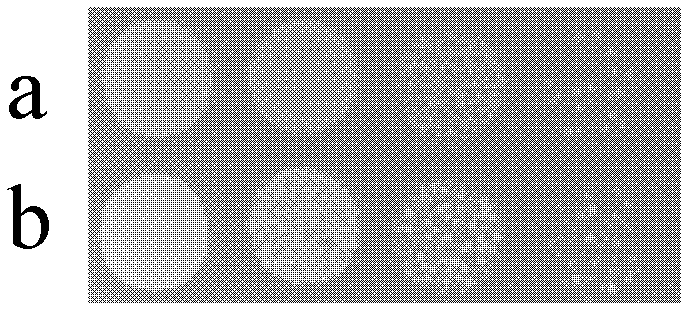Application of HIN protein gene of deinococcus radiodurans R1 in salt-tolerant plant cultivation
A gene and protein technology, applied in the field of new functions of R1HIN protein gene of Deinococcus radiodurans, can solve unseen problems
- Summary
- Abstract
- Description
- Claims
- Application Information
AI Technical Summary
Problems solved by technology
Method used
Image
Examples
Embodiment 1
[0034] Example 1 Expression of D.radiodurans R1 HIN protein gene (DR1372) sequence in Escherichia coli
[0035] According to the published sequence of the HIN protein gene (DR1372) in the D.radiodurans R1 genome, design a pair of PCR-specific primers to amplify the complete nucleotide sequence from D.radiodurans R1 genomic DNA:
[0036] Up 5′ATTA GAGCTATGAAGAAGATGGCTTTTG3';
[0037] Down 5′ACGC TCCTCAAAACACCGATAAAG3'.
[0038] The parts in black italics above are enzyme cleavage sites.
[0039] The target gene sequence was amplified from the genome of D.radiodurans R1 by PCR method, reaction conditions: 94°C 10min, [94°C 60sec, 55°C 30sec, 72°C 60sec] 30 cycles, 72°C 10min, the PCR product was gelatinized After recovery, it was cloned on the vector pGEMT-easy, named pGEMT-hin, and verified by sequencing; then the pRADZ3 vector containing cohesive ends and the promoter groEL was obtained by SpeI / NdeI double digestion, and the HIN protein gene (DR1372) Connected to the pR...
Embodiment 2
[0041] Example 2 Salt Tolerance Experiment of Recombinant Strain Containing D.radiodurans R1 HIN Protein Gene (DR1372)
[0042] 1. Experimental method
[0043] 1. The 2 recombinant Escherichia coli obtained in Example 1 were respectively inoculated in 20 mL of LB liquid medium (containing Amp antibiotics), and after the shake flask was cultured overnight (37° C.), they were then respectively transferred to 100 mL of LB liquid medium In the medium, try to keep the inoculum volume consistent, cultivate to OD 600 ≈0.5 is enough.
[0044] 2. After centrifuging 10 mL of the bacterial solution, shock it in an equal volume of 4M NaCl salt solution for 2 hours, and immediately dilute each sample to 10 times with sterile deionized water. -4 , Take 10 μL and spot on the surface of LB solid medium, culture at 37°C for 16 hours, observe the colony formation and take pictures.
[0045] 2. Experimental results
[0046] image 3 It shows that the growth state of the JM-hin strain containi...
Embodiment 3
[0049] Example 3 Expression of HIN protein gene (DR1372) in rapeseed and salt tolerance experiment of transgenic plants
[0050] (1) Agrobacterium-mediated transformation of rapeseed experiment
[0051] 1. Preparation of competent Agrobacterium tumefaciens EHA105
[0052] 1) Pick a single colony and inoculate it in 5mL YEB liquid medium (containing rifampicin Rif 50mg / L), and culture overnight at 28°C with shaking at 250rpm;
[0053] 2) Take 2mL of bacterial liquid, add it to 50mL YEB liquid medium (containing Rif 50mg / L), and culture at 28°C and 250rpm until OD 600 ≈0.6;
[0054] 3) Transfer the bacterial solution to a 50mL sterile centrifuge tube, bathe in ice for 30min, and centrifuge at 5000×g for 5min;
[0055] 4) Discard the supernatant, use 2mL 20mM CaCl for precipitation 2 Resuspended, 100 μL each was dispensed into 1.5mL centrifuge tubes, and stored in liquid nitrogen for later use.
[0056] 2. Transformation of recombinant plasmid DNA into Agrobacterium
[0057...
PUM
 Login to View More
Login to View More Abstract
Description
Claims
Application Information
 Login to View More
Login to View More - R&D
- Intellectual Property
- Life Sciences
- Materials
- Tech Scout
- Unparalleled Data Quality
- Higher Quality Content
- 60% Fewer Hallucinations
Browse by: Latest US Patents, China's latest patents, Technical Efficacy Thesaurus, Application Domain, Technology Topic, Popular Technical Reports.
© 2025 PatSnap. All rights reserved.Legal|Privacy policy|Modern Slavery Act Transparency Statement|Sitemap|About US| Contact US: help@patsnap.com



